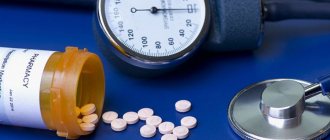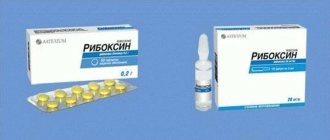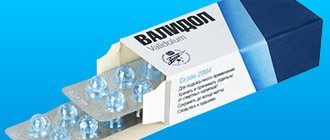The French chemist H. Braconnot first isolated glycine by treating a solution of collagen with sulfuric acid in 1820. The taste of glycine is sweet like glucose, due to its sweet nature it gets its name, which was derived from the Greek word “glykys”. Glycine is a simple amino acid without any chemical configuration L or D. Structural extracellular proteins, in particular elastin and collagen, are one third glycine, which is actively involved in their synthesis. There is evidence that changes in elastin formation caused by a lack of glycine were associated with a violation of the elastic properties of blood vessels, and this is an important aspect in the pathogenesis of arterial hypertension.
Glycine deficiency
For mammals such as pigs, rodents and humans, glycine is a nonessential amino acid. But some sources claim that the amount of glycine produced in vivo in pigs, rodents and humans is not sufficient for their metabolic activity. The human body requires 2 g of glycine per day. Legumes, fish, meat and dairy products are the main sources of its intake from food. Glycine deficiency in small amounts is not harmful to health, but severe deficiency can result in impaired immune response, decreased growth, impaired nutrient metabolism, and negative health effects. Therefore, glycine can be called a conditionally essential amino acid for humans and other mammals, promoting good growth.
The role of glycine in metabolism
Glycine is extremely important in the metabolism and nutrition of most mammals and humans. If we take all the amino acids in the human body as 100%, it turns out that 11.5% of them are glycine. In general, for the growing human body, approximately 80% of all available glycine is used for protein synthesis. In the protein collagen, glycine is located at every third position, for this reason a good dietary source of this amino acid is hydrolyzed collagen. In our central nervous system, glycine acts as a neurotransmitter, thereby controlling perception and behavior, food intake, and overall overall homeostasis of the body. Glycine is involved in the regulation of immune system functions, responsible for the production of superoxide and the synthesis of cytokines by changing intracellular Ca2+ levels. Conjugation of bile acids in humans is facilitated by glycine, so that glycine has an indirect but decisive effect on the absorption and digestion of fat-soluble vitamins and lipids. Essential substances such as RNA, DNA, creatine, serine and others are generated through several pathways that use glycine. Summarizing all that has been said, we can note that glycine is necessary for cell protection, the functioning of the immune system, growth, development, metabolic processes at all levels, i.e. for human survival. The same applies to many other mammals.
From an in vivo study, it is known that some melanomas such as B16 and liver cancer can be stopped by glycine as it inhibits endothelial cell proliferation and angiogenesis. Some of the other benefits of glycine are that it has cryoprotective effects against lethal cell injuries such as anoxia, as it inhibits Ca2+-dependent degradation by non-lysosomal proteases, including calpains. Benign prostatic hyperplasia, schizophrenia, stroke and some of the rare inherited metabolic disorders can be treated with glycine supplementation. The harmful effects of some drugs on the kidneys after organ transplantation may be protected by a glycine diet. Tumor necrosis factor, inflammation and macrophage activation are inhibited by glycine.
Importance of glycine for the liver: reduction of hepatotoxicity
There is evidence that glycine is very effective in optimizing the functioning of g-glutamyl transpeptidase, alkaline phosphatases, aspartate transaminase, tissue fatty acid composition, and alanine transaminase, so oral glycine supplements may be very effective in protecting alcohol-induced hepatotoxicity. In addition, glycine may improve or alter lipid levels during chronic alcohol feeding by maintaining membrane integrity. It was shown that rats given glycine had very low blood alcohol levels. Iimuro et al. states glycine as an excellent preventive agent for reducing blood alcohol levels. Glycine has many beneficial effects, such as reducing the accumulation of free fatty acids and regulating the individual composition of free fatty acids in the brain and liver during a chronic alcoholic diet. From the above evidence and reports, glycine has been proven to be effective and successful as a protective agent to combat ethanol-induced toxicity. In an animal model, glycine supplementation reduced lipid levels in alcohol-induced hyperlipidemia. From the scientific literature it follows that oral administration of glycine reduces the formation of alcohol metabolic products, such as acetaldehyde. Glycine may also combat free radical oxidative stress in liver cells, blood plasma, and red blood cell membranes in humans and animals suffering from alcoholic liver damage. The negative effects of alcohol can be reduced with the help of glycine, in particular it has a preventive effect against hepatotoxicity and, along with alanine, shows a special character for improving alcohol metabolism.
Detailed description of the study
Troponin I is a protein that is part of the contractile apparatus of cardiac muscle cells - cardiomyocytes. When these cells are damaged, troponin I enters the bloodstream. For many years, it was believed that the main cause of cardiac troponin release into the bloodstream was necrosis of cardiomyocytes as a result of myocardial infarction. However, recent studies have shown that there are other mechanisms leading to myocardial damage and the release of troponin into the bloodstream, such as inflammatory processes, apoptosis, or programmed cell death, etc.
The amount of troponin entering the blood directly depends on the amount of myocardial damage. The highly sensitive troponin I test can detect very low concentrations of troponin I in the blood, including in people without symptoms of CVD, which can be used to predict the risk of developing CVD:
| Risk | Men (ng/l) | Women (ng/l) |
| Short | <6 | <4 |
| Average | 6‒12 | 4‒10 |
| Elevated | >12 | >10 |
The atherogenic index (AI), or cholesterol index, is an indicator characterizing the ratio of atherogenic and antiatherogenic lipoproteins, that is, “bad” and “good” cholesterol. The former include low and very low density lipoproteins (LDL and VLDL), the latter – high density lipoproteins (HDL). It is calculated using the formula: AI = (total cholesterol - HDL) / HDL. The value should not exceed 3.5. An atherogenic index over 4 indicates a high risk of developing atherosclerosis and coronary heart disease.
Homocysteine is a sulfur-containing amino acid that is not found in the structure of proteins and is an intermediate product of the metabolism of the amino acid methionine. Under normal conditions, homocysteine undergoes further chemical reactions and does not accumulate in the body. However, under certain conditions, for example, with a lack of vitamins B9, B12, B6, the metabolism of homocysteine is disrupted, resulting in an increase in its concentration in cells, tissues and blood plasma.
Due to the cytotoxic effect of homocysteine, its accumulation in the body causes disruption in the functioning of various organs and systems. Among other things, homocysteine damages the walls of blood vessels, making them loose, which contributes to the accumulation of cholesterol in the walls of blood vessels and the formation of cholesterol plaques. Research over the past twenty years has shown that homocysteine is an independent risk factor for CVD. An increase in blood homocysteine levels by 5 µmol/l leads to an increase in the risk of atherosclerotic vascular damage by 80% in women and 60% in men.
Glycine for muscles: regeneration of muscle cells and tendons
More recent data from a study published this year shows that glycine stimulates satellite cell proliferation and muscle regeneration by increasing activation of the mTORC1 signaling complex and replenishing the pool of one-carbon units. Thus, it has therapeutic utility for cell therapy and drug delivery in muscle degenerative diseases (2)
Glycine has broad biological effects, acting as a modulator of the inflammatory cascade, and is the predominant amino acid in collagen. A diet enriched with glycine provides beneficial effects on toxicity and inflammation, as glycine can more quickly restructure collagen molecules due to its broad anti-inflammatory effects.
Biomechanical results from animal models have shown that the tendon is more resistant to rupture stress when fed a glycine-rich diet. In this case, glycine induced the synthesis of important components of the tendon. Evidence suggests it may be a useful supplement for people with tendon inflammation. (3)
What happens in the heart during tachycardia?
Accelerated contractions increase the heart's need for oxygen, and there are mechanisms that provide this opportunity, but for a short time.
Tachycardia itself helps pump more blood, and more oxygen is delivered to the heart and other organs. This occurs provided there is normal blood pressure, sufficient contraction strength, and good vascular patency. Also, heart cells can reduce their need for oxygen by improving the efficiency of its use: connecting more amino acids to oxidize glucose. If it is not possible to support the heart muscle during tachycardia, then it will suffer from a lack of energy, and pathological changes will occur in it. Prolonged or too frequent attacks of rapid heart rate deplete the resources of the myocardium, and its ability to adapt to the load is gradually reduced. Over time, this leads to the fact that all tissues are less well supplied with blood and suffer from hypoxia.
Improved sleep quality and anti-anxiety activity
Glycine acts as an inhibitory neurotransmitter in caudal regions of the central nervous system (CNS), such as the spinal cord and brain stem. By binding to receptors, glycine has an inhibitory effect on neurons, suppresses the release of excitatory amino acids, such as glutamic acid, from neurons, and stimulates the release of GABA (GABA).
Glycine is currently used as a dietary supplement to improve sleep quality, but its mechanism of action is poorly understood in humans. Glycine administration to mice increased non-rapid eye movement (NREM) sleep time and decreased the number and average duration of wakefulness episodes when administered during the dark period. Peripheral administration of glycine induced fragmentation of sleep/wake states, which was due to inhibition of orexin neurons responsible for wakefulness. (4)
Russian scientists conducted a study in which they established the high anti-anxiety activity of orally consumed Glycine (in a dosage of up to 1 g), comparable to the similar effect of Tofizopam, and superior to that of Fabomotizol. Glycine was also better tolerated compared to other drugs included in the study, and was highly effective against the clinical manifestations of restless legs syndrome.(5)
Oral administration of very high doses of glycine (peak dose 0.8 g/kg/day) is used as an adjuvant treatment for schizophrenia to enhance glutamate neurotransmission and alleviate hypofunction of the glutamate system, which is believed to contribute to the disorder. Studies in schizophrenia have documented clinical improvements after 2 weeks of oral glycine administration, suggesting that brain glycine levels are sufficiently elevated to produce a clinical response within this time (6,7).
Glycine dosage
The issue of optimal dosing of oral glycine has not been fully studied. A review of human studies shows that the use of glycine has been observed in a wide range, from a few hundred milligrams to 15 g per day (not taking into account the treatment of schizophrenia with the mega-doses practiced). The latter figure was announced in a study in which it was found that glycine significantly reduced blood pressure in people with metabolic syndrome. In general, healthy people without chronic pathologies who expect to compensate for a possible deficiency of this amino acid or receive a calming effect, incl. before bedtime, it is better to focus on average single doses of 1-3 g and 1-3 doses per day on an empty stomach, which can be slightly increased in order to lower blood pressure.
Sources:
- Multifarious Beneficial Effect of Nonessential Amino Acid, Glycine: A Review
- Meerza Abdul Razak et al. Oxid Med Cell Longev. 2021.
- Glycine Improves Biochemical and Biomechanical Properties Following Inflammation of the Achilles Tendon Cristiano Pedrozo Vieira et al. Anat Rec (Hoboken). 2015 Mar.
- Orexin Neurons Receive Glycinergic Innervations Mari Hondo et al. PLoS One. 2011.
- Comparative analysis of the therapeutic effectiveness of glycine in complex therapy of patients with chronic vertebrobasilar insufficiency December 30, 2015, I.V. Kravchenko St. Petersburg State Budgetary Healthcare Institution “City Clinic No. 38”, interdistrict department of rehabilitation treatment
- Rosse RB, Theut SK, Banay-Schwartz M, Leighton M, Scarcella E, Cohen CG, Deutsch SI. Glycine adjuvant therapy to conventional neuroleptic treatment in schizophrenia: an open-label, pilot study. Clinical Neuropharmacology. 1989;12:416–424.
- Javitt DC, Zylberman I, Zukin SR, Heresco-Levy U, Lindenmayer JP. Amelioration of negative symptoms in schizophrenia by glycine. American Journal of Psychiatry. 1994;151:1234–1236.
How to treat atrial fibrillation
There are 2 generally accepted treatment strategies for patients with symptoms of atrial fibrillation. The first is the restoration and maintenance of normal sinus rhythm of the heart. The second is a decrease in the frequency of contractions of the ventricles of the heart, that is, atrial fibrillation remains, but becomes less intense (within 80–100 beats per minute), and the patient does not feel it.
1. Camm AJ, Kirchhof P., Gregory YH at al. ACC/AHA/ESC 2010 guidelines for the management of patients with atrial fibrillation-executive summary // Eur. Heart J. – 2010. – Vol. 31. – P. 2369-2429.
Numerous clinical studies have shown that the strategic goal of maintaining sinus rhythm does not provide advantages over a hands-off approach during AF other than attempts to limit (control) the ventricular rate of the heart. Tighter heart rate control also had no additional effect.
It turns out that with proper treatment, diet and proper physical training with the symptoms of atrial fibrillation, you can live happily ever after? This is almost true, if not for the high risk of stroke.
2. Hylek EM, Go AS, Chang Y., et al. Effect of intensity of oral anticoagulation on stroke severity and mortality in atrial fibrillation. N Engl J Med 2003; 349:1019–1026.
Research results indicate that only antithrombotic therapy (one of the most optimal methods of blood thinning) causes a decrease in mortality associated with atrial fibrillation.
What to drink to thin your blood?
To prevent stroke, anticoagulant blood thinners are prescribed. They are indicated for almost 90% of patients with signs of atrial fibrillation, regardless of the stage of the disease. However, anticoagulants should be taken with caution: if used incorrectly, they can reduce blood clotting and provoke bleeding. Anticoagulant therapy should be accompanied by careful monitoring of the blood coagulation system using INR determination. This stops many people from taking anticoagulants for a long time.
Rice. 1. Insufficient frequency of warfarin prescription
As an additional therapy, in addition to medications, in the early stages of the disease or with mild symptoms, on the recommendation of a doctor, treatment of atrial fibrillation with folk remedies can be used, which helps thin the blood and strengthens the heart. Basically, folk treatment is herbal medicine: a decoction of hawthorn or viburnum berries, an infusion of yarrow, a decoction of dill seeds.
So what do you need to thin your blood?
“The study results demonstrated that when treating atrial fibrillation, antithrombotic therapy alone was associated with a reduction in mortality.”
The decision on the advisability of eliminating atrial fibrillation should be made by the attending physician. This largely depends on the form of the arrhythmia, the cause of its occurrence, the disease against which it arose and on the effectiveness of the previously prescribed drug treatment for atrial fibrillation.
Figure 1. Warfarin reduces the risk of stroke in atrial fibrillation (based on Hart et al., 2007)
Despite the fact that the paroxysmal form of atrial fibrillation most often goes away on its own within a few hours or days, it is usually sought to be eliminated with the help of antiarrhythmic drugs.
If the paroxysmal form of atrial fibrillation lasts more than 2 days, before eliminating it, it is necessary to carry out prophylaxis with drugs that reduce blood clotting. This is necessary to prevent the occurrence of thromboembolism at the time of restoration of normal sinus rhythm or in the first hours after elimination of the arrhythmia.
With a permanent form of atrial fibrillation, the attending physician can choose both tactics for eliminating atrial fibrillation and tactics for preserving it. In any case, this can only be done after long-term (3-4 weeks) use of drugs that reduce blood clotting. In addition, these drugs should be taken for at least 1 month after the permanent form of atrial fibrillation has been eliminated.











